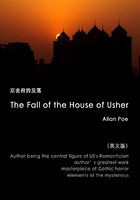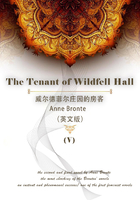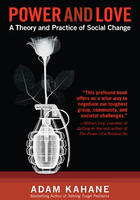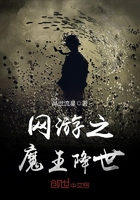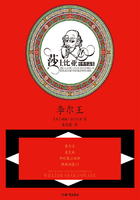Insights into Transformation
Social fabric is created one room at a time. It is formed from small steps that ask “Who do we want in the room?” and “What is the new conversation that we want to occur?” In community building, we choose the people and the conversation that will produce the accountability to build relatedness, structure belonging, and move the action forward.
A series of core insights informs us how to answer these questions. These insights include ideas on focusing on gifts, on associational life, and on the way all transformation occurs through language. Also critical are insights about the context that governs the conversations and the willingness to speak into the future.
Two additional strands in the fabric of community explored here are the need for each small step to capture a quality of aliveness and the need for it to evolve in an organic way. There is an established method for accomplishing this aliveness that values all voices in the room, uses the small group even in large gatherings, and recognizes that accountability grows out of the act of cocreation. The essence of creating an alternative future comes from citizen-to-citizen engagement that focuses at each step on the well-being of the whole.
? ? ?
Major influences on the belief system underlying this methodology of communal transformation come from several disciplines and people whose work has been radical in many ways; their insights are foundational for our purposes. There are many others who inform us and are mentioned in this book, but these five touch the core: John McKnight, Werner Erhard, Robert Putnam, Christopher Alexander, and PeterKoestenbaum. The sixth collection of insights is from a group of wizards who have given life to large group methodologies—some of whom are Marvin Weisbord, Kathie Dannemiller, Dick and Emily Axelrod, Carolyn Lukensmeyer, Barbara Bunker, Billie Alban, and Juanita Brown.
There are two more people whose insights are important to understanding how the world changes. One is David Bornstein. His book How to Change the World analyzes nine social entrepreneurs who created large social movements around the globe. David's summary of why they were successful is worth our attention. Finally, I too briefly include the thinking of Allan Cohen. He translates the world of emergence and complex adaptive systems into language that once in a while I begin to think I understand.
I chose all of these people because I personally know most of them and they are the ones who have shaken my own thinking; their ideas have, for me, endured the test of time and experience.
What follows is a summary of the aspects of these people's work that are useful to this enterprise. I'll summarize their insights briefly and then weave them throughout the rest of the book.
The McKnight Insights: Gifts, Associational Life, and Power
John McKnight is a leading light in the world of understanding the nature of community and what builds it. Three of his insights have permanently changed my thinking.
Focus on gifts. First and foremost, he asserts that community is built by focusing on people's gifts rather than their deficiencies. In the world of community and volunteerism, deficiencies have no market value; gifts are the point. Citizens in community want to know what you can do, not what you can't do.
In the professional world of service providers, whole industries have been built on people's deficiencies. Social service and most of medicine, therapy, and psychology are organized around what is missing or broken in people.
McKnight points out that if you go to a professional service provider and say you have no deficiencies or problems, that you just want to talk about your gifts and talents, you will be shown the door and treated as though you are wasting their time. Go to an association, or a group of neighbors, and tell them what your capabilities are, and they get quite interested.
This insight is profound if taken seriously, for it eliminates most of the conversations we now have about problem diagnosis, gap analysis (if you do not know what this is, be grateful), weaknesses, and what's wrong with me, you, and the rest of the world. It also underscores the limitation of labeling people. McKnight knows that the act of labeling, itself, is what diminishes the capacity of people to fulfill their potential. If we care about transformation, then we will stay focused on gifts, to such an extent that our work becomes to simply bring the gifts of those on the margin into the center.
John's focus on gifts has led to his founding a worldwide movement called Asset-Based Community Development. Simply put, this movement declares that if we want to make communities stronger, we should study their assets, resources, and talents. It is in the attention to these things that something new can occur.
Associational life. The second insight that is relevant here is about the limitations of systems. John sees a system as an organized group of funded and well-resourced professionals who operate in the domain of cases, clients, and services. As soon as you professionalize care, you have produced an oxymoron. He says that systems are capable of service but not care. Talk to any poor person or vulnerable person and they can give you a long list of the services they have received. They are well serviced, but you often have to ask what in their life has fundamentally changed.
The alternative to a “system” is what John calls “associational life”: groups of people voluntarily coming together to do some good. In the disabilities world, John's work has been enthusiastically received. This has led to a widespread effort to take people with visible disabilities out of institutions and systems and bring them back into neighborhoods. Support groups are created, slowly, voluntarily, with a lot of phone calls and requests, so that ordinary citizens come together to support their new neighbors. This strategy brings generosity back into a neighborhood, and in the doing, citizens whose disabilities are hidden (all of us) experience a transformation in their own lives.
Power in our hands. The third insight for community building is John's faith in citizens to identify and solve problems for themselves. He finds that most sustainable improvements in community occur when citizens discover their own power to act. Whatever the symptom—drugs, deteriorating houses, poor economy, displacement, violence—it is when citizens stop waiting for professionals or elected leadership to do something, and decide they can reclaim what they have delegated to others, that things really happen. This act of power is present in most stories of lasting community improvement and change.
To summarize these insights from the work of John McKnight and his partner, Jody Kretzmann: Communities are built from the assets and gifts of their citizens, not from the citizens' needs or deficiencies. Organized, professionalized systems are capable of delivering services, but only associational life is capable of delivering care. Sustainable transformation is constructed in those places where citizens choose to come together to produce a desired future.
The Erhard Insights: The Power of Language, Context, and Possibility
For over 30 years, Werner Erhard has created thinking and learning experiences that have affected millions of people's lives. Many of the ideas he has worked with derive from the work of others, but Werner has named and integrated them into something more powerful than where the thinking began. His work lives through the Landmark Corporation and other licensees. What I want to select from his work here is a small part of his legacy, but these are the ideas that have changed my practice.
The power of language. Werner understands the primal creative nature of language. Many of us have focused for years on improving conversations. We have known that dialogue and communication are important tools for improvement. Werner takes it to a whole new realm by asserting that all transformation is linguistic.
He believes that a shift in speaking and listening is the essence of transformation. If we have any desire to create an alternative future, it is only going to happen through a shift in our language. If we want a change in culture, for example, the work is to change the conversation—or, more precisely, to have a conversation that we have not had before, one that has the power to create something new in the world. This insight forces us to question the value of our stories, the positions we take, our love of the past, and our way of being in the world.
The power of context. Another insight is in the statement, “The context is decisive.” This means that the way we function is powerfully impacted by our worldview, or the way, in his language, “the world shows up for us.” Nothing in our doing or the way we go through life will shift until we can question, and then choose once again, the basic set of beliefs—some call it mental models; we're calling it context here—that lie behind our actions. Quoting Werner, “Contexts are constituted in language, so we do have something to say about the contexts that limit and shape our actions.”
Implied in this insight is that we have a choice over the context within which we live. Plus, as an added bargain, we can choose a context that better suits who we are now without the usual requirements of years of inner work, a life-threatening crisis, finding a new relationship, or going back to school (the most common transformational technologies of choice).
The way this happens (made too simple here) is by changing our relationship with our past. We do this by realizing, through a process of reflection and rethinking, how we have not completed our past and unintentionally keep bringing it into the future. The shift happens when we pay close attention to the constraints of our listening and accept the fact that our stories are our limitation. This ultimately creates an opening for a new future to occur.
The power of possibility. Changing our relationships with our past leads to another aspect of language that Werner has carefully developed. This is an understanding of the potential in the concept and use of possibility. Possibility as used here is distinguished from other words like vision, goals, purpose, and destiny. Each of those has its own profound meaning, but all are different from the way Werner uses the word possibility. Possibility, here, is a declaration, a declaration of what we create in the world each time we show up. It is a condition, or value, that we want to occur in the world, such as peace, inclusion, relatedness, reconciliation. A possibility is brought into being in the act of declaring it.
For example, peace may not reign at this moment, but the possibility of peace does enter the room just because we have walked in the door. Peace here is a future not dependent on achievement; it is a possibility. The possibility is created by our declaration, and then, thankfully, it begins to work on us. The breakthrough is that we become that possibility, and this is what is transforming. The catch is that possibility can work on us only when we have come to terms with our story. Whatever we hold as our story, which is our version of the past, and from which we take our identity, becomes the limitation to living into a new possibility.
Werner has described this with more precision in recent personal correspondence:
I suggest that you consider making it clear that it is the future that one lives into that shapes one's being and action in the present. And, the reason that it appears that it is the past that shapes one's being and action in the present is that for most people the past lives in (shapes) their view of the future.
. . . it's only by completing the past (being complete with the past) such that it no longer shapes one's being and action in the present that there is room to create a new future (one not shaped by the past—a future that wasn't going to happen anyhow). Futures not shaped by the past (i.e., a future that wasn't going to happen anyhow) are constituted in language.
In summary, (1) one gets complete with the past, which takes it out of the future (being complete with the past is not to forget the past); (2) in the room that is now available in the future when one's being and action are no longer shaped by the past, one creates a future (a future that moves, touches, and inspires one); (3) that future starts to shape one's being and actions in the present so that they are consistent with realizing that future.
Werner Erhard's way of thinking about language, context, and possibility are key elements in any thinking about authentic transformation. As with the other insights here, they are about a way of being in the world first, and then they can be embodied in concrete actions.
The Putnam Insights: Social Capital and the Well-Being of Community
Robert Putnam wrote Bowling Alone and amplified the conversation about the role that social capital plays in building community. As one part of his extensive research, he studied a fair number of Italian towns and tried to understand why some were more democratic, were more economically successful, had better health, and experienced better education achievement.
His findings were startling, for he discovered that the one thing that distinguished the more successful from the less successful towns was the extent of social capital, or widespread relatedness that existed among its citizens. Success as a town was not dependent on the town's geography, history, economic base, cultural inheritance, or financial resources.
Putnam shows how we have become increasingly disconnected from family, friends, neighbors, and our democratic structures—and how we may reconnect. He warns that our stock of social capital—the very fabric of our connections with each other—has plummeted, impoverishing our lives and communities.
Geography, history, great leadership, fine programs, economic advantage, and any other factors that we traditionally use to explain success made a marginal difference in the health of a community. Community well-being simply had to do with the quality of the relationships, the cohesion that exists among its citizens. He calls this social capital.
In the book Better Together, Putnam and coauthor Lewis M. Feldstein explain that “social capitalrefers to social networks, norms of reciprocity, mutual assistance, and trustworthiness. The central insight of this approach is that social networks have real value both for the people in those networks . . . as well as for bystanders. Criminologists, for instance, have shown that the crime rate in a neighborhood is lowered when neighbors know one another well, benefiting even residents who are not themselves involved in neighborhood activities.”
They go on to distinguish between “bonding” and “bridging” social capital. Bonding social capital are networks that are inward looking, composed of people of like mind. Other social networks “encompass different types of people and tend to be outward looking—bridging social capital.” It is primarily the bridging social capital that we are interested in here. As Putnam and Feldstein put it: “[A] society that has onlybonding social capital will . . . [be] segregated into mutually hostile camps. So a pluralistic democracy requires lots of bridging social capital, not just the bonding variety.”
The Alexander Insights: Aliveness, Wholeness, and Unfolding
Christopher Alexander speaks from the world of architecture, but his thinking applies equally well to the creation of community. He grieves over the fragmented and mechanistic way we currently operate. In The Nature of Order, Book 1: The Phenomenon of Life, he writes,
In discussing what to do in a particular part of a town, one person thinks poverty is the most important thing. Another person thinks ecology is the most important thing. Another person takes traffic as his point of departure. Another person views the maximization of profit from development as the guiding factor. All these points of view are understood to be individual, legitimate, and inherently in conflict. It is assumed that there is not a unitary view through which these many realities can be combined. They simply get slugged out in the marketplace, or in the public forum.
But instead of lucid insight, instead of growing communal awareness of what should be done in a building, or in a park, even on a tiny bench—in short, of what is good—the situation remains one in which several dissimilar and incompatible points of view are at war in some poorly understood balancing act. [See Role Models and Resources.]
Aliveness and wholeness. The alternative to this fragmentation is to create structures that are defined by what Alexander calls “a quality of aliveness.” The absence or presence of this quality has profound impact on the experience of being in that structure. Also, that quality of aliveness must be present in each step in the design and creation of the structure, for it to be present in the final product.
This aliveness grows out of a sense of wholeness. Wholeness is made up of a collection of separate centers, where each center has “a certain life or intensity. . . . We can see that the life of any one center depends on the life of other centers. This life or intensity is not inherent in the center by itself, but is a function of the whole configuration in which the center occurs.”
To connect this to our discussion, we must ask whether every single step in our work holds this quality of life or intensity. Whether we're talking about a strategy, program, invitation, dialogue, gathering, or building a master plan, the human experience of aliveness in each choice or step has as much significance as any technical, economic, or purely practical consideration.
This aliveness also is most often found in surprising places. Often in irregular structures, all with aspects of imperfection. Alexander identifies 15 properties that create the wholeness and aliveness. It would take us off track to list them all here, but some are clearly to the point. Listen to the language he uses and you get a feel for the world he is naming: Deep Interlock and Ambiguity, Contrast, Roughness, Simplicity and Inner Calm, Not-Separateness.
It is easy to take these words, which he uses to reflect qualities in nature and in a room or building, and apply them to the world of social capital, human relatedness, and belonging that we are concerned with here. Much of what follows in the book is just this: bringing aliveness and wholeness to our notions of leadership, citizenship, social structures, and context, which are essential in creating the community of belonging and restoration that we desire.
Transformation as unfolding. One more influence from Alexander is his belief that aliveness and wholeness can occur only through a process of “unfolding.” Transformation unfolds and is given structure by a consciousness of the whole. The task of transformation is to operate so that what we create grows organically, more concerned with the “quality of aliveness” that gives us the experience of wholeness than with a predictable destination and the speed with which we can reach it.
An unfolding strategy requires giving an uncomfortable importance to each small step we take. We have to worry as much about the arrangement of a room as we do about the community issue that caused us to assemble. It leads us to value the details of each step so that it becomes its own center. For example, each step of a master plan has to be a small example of the qualities we want in the final large thing. Throughout this book, you will see the effort to value the importance of small things; this intention is a direct outgrowth of Alexander's insights.
In summary, Christopher Alexander moves us toward aliveness, embodied in those places and moments that give us the experience of belonging. In the absence of aliveness, we unknowingly experience an inner conflict, a feeling of something unresolved.
The Koestenbaum Insights: Paradox, Freedom, and Accountability
For several decades, Peter Koestenbaum has brought the insights of philosophy to the business marketplace. His work on the Leadership Diamond is a holistic and practical landscape of what is required of leaders to achieve greatness in the world, both personally and for their institutions.
Appreciating paradox. One insight that informs our exploration of communal transformation is Peter's understanding of how we can come to terms with the paradoxical nature of human affairs. He values ambiguity and anxiety as the natural condition of being human. The painful choices people make in their lives and for their institutions are an affirming aspect of their humanity. These choices are not the sign of a problem, or weakness, or the world gone wrong. It is out of the subjectivity and complexity of life that transformation emerges. As a philosopher and consultant, Peter has always given voice to how profound the right question can be.
It is the willingness to reframe, turn, and even invert a question that creates the depth and opening for authentic change. Questions take on an almost sacred dimension when they are valued for their own sake. This is in stark contrast to the common need for answers and quick formulaic action.
Choosing freedom and accountability. A second thread that courses through this book, and also that has given coherence to all of Peter's work, is the search for human freedom—freedom being the choice to be a creator of our own experience and accept the unbearable responsibility that goes with that. Out of this insight grows the idea that perhaps the real task of leadership is to confront people with their freedom. This may be the ultimate act of love that is called for from those who hold power over others.
Choosing our freedom is also the source of our willingness to choose to be accountable. The insight is that freedom is what creates accountability. Freedom is not an escape from accountability, as the popular culture so often misunderstands.
One more way that Peter's work has formed my thinking about community is the idea that our willingness to care for the well-being of the whole occurs when we are confronted with our freedom, and when we choose to accept and act on that freedom.
The Insights of Large Group Methodology: Designing for the Experience of Community
Over the last 20 years, a rather small group of people has become quite sophisticated in bringing large groups of people together (from 50 to 5,000 at a time) to create visions, build strategy, define work processes, and create direction for institutions and communities. This body of knowledge has many names but is generally called large group methodology. While it is well established among expert practitioners, it has not found its way into the mainstream of how most leaders do planning and bring people together. These methods tend to be relegated to something that is pulled out on special occasions for special events. We treat these methods like sterling silver and use the stainless every day. This is a shame, for the difference between this kind of practice and the conventional way we bring people together is more like the difference between using sterling silver and eating with our hands.
These large group methods are too profound and too important to stay primarily in the hands of specialized experts. They need to be in the regular practice of community and institutional leaders. They are more than simply tools; they are the means of creating the experience of democracy and high engagement, which we say we believe in but rarely embody. As this thinking and practice grow, they have the potential to fundamentally change the nature of leadership, which would be a good thing.
Four of the innovators whose work is highlighted have been friends and teachers of mine for years. I reflect their thinking here only because I have been in many rooms with them. There are many others who have also changed the world and our thinking about bringing large groups of people together: Harrison Owen, Barbara Bunker, Billie Alban, Fred and Marilyn Emory, and Carolyn Lukensmeyer come to mind.
Future Search. Marvin Weisbord has created Future Search with Sandra Janoff. This structure begins with a scan of the environment and brings people into a conversation about the future they want to create. Marvin and Sandra have long understood the importance of the right question, the way to balance expert input with communal dialogue, and how to structure the flow of small group discussions into a collective outcome. They have also codified the distinction between solving problems and creating a future.
Conference Model. Dick and Emily Axelrod are design geniuses. They realized early on that if we can change the way we meet, we can change the way we live together. They know that learning best occurs when we structure meetings in a way that puts people in contact with each other where they experience in a conference the same dilemmas they face in life. They create experiences that simulate the democratic, self-governing principles that, if taken seriously, can create large communities of committed and powerful people.
Whole-Scale Change. The late Kathie Dannemiller was another innovator in this movement. “One heart—one mind” was the spirit that she lived, and her goal was to bring that into an event where people assembled to create a new future. She had a faith in the collective capacity of employees and citizens that would put Thomas Jefferson to shame.
Her guiding question was “How will the world be different tomorrow as a result of our meeting today?” Like the others, she valued the question and held deep skepticism about answers. She also knew that the questions with the most power were the ones that touched the heart and spoke to what people were experiencing. If “What did you know and when did you know it?” defined the Watergate hearings, the question “What did you hear and how did you feel about that?” was at the core of her work.
Kathie wanted the whole system in the room, and then she constantly broke it into small groups. She advocated that the small group worked best when it was maximally diverse—meaning that each small group was a microcosm of the large system. This composition plus a broad enough question results in people momentarily putting aside their own individual interests and beginning to care for the well-being of the whole.
The World Café. Finally, I want to talk of the work of Juanita Brown and her partner, David Isaacs. Their structure is called the World Café. Its gift is in its sophisticated simplicity. They begin by defining a large question that gets at the purpose of the gathering. Each small group focuses on the question, but in the Café method, the group sits at a round cocktailsized table.
On that table is a flip chart sheet or butcher paper and a marker for each person. As people talk, each writes on the paper in large letters the ideas worth retaining. At certain intervals, as in musical chairs (except there are enough seats for all), one person stays as host at the table and the others go to different tables. The host summarizes for the new group what is on the paper, and the discussion continues. Eventually, the ideas from the tables are shared with the whole group. It is an elegant model to create convergence for a large group.
The Key Insights of Large Group Methodologies
Now, the intent here is not to describe the full process for any of these large group innovative methods—I know that I do each a great injustice in my minimalist descriptions and acknowledgment. The intent is to define some of the essential elements that form the design basis from this large group work that informs our thinking about community transformation.
Each element of each large group method has profound implications for how people meet, how they create an alternative future, and how community can be developed in a sustainable way. What we may once have relegated as useful but incidental little “training exercises” now have a power beyond our imagination. They form a way of thinking and operating in community that, when matched with the philosophical insights of the others, give us the structure of belonging that we seek. Here is a brief summary of the power of their thinking:
Accountability and commitment. The essential insight is that people will be accountable and committed to what they have a hand in creating. This insight extends to the belief that whatever the world demands of us, the people most involved have the collective wisdom to meet the requirements of that demand. And if we can get them together in the room, in the right context and with a few simple ground rules, the wisdom to create a future or solve a problem is almost always in the room. All you need to ensure this is to make sure the people in the room are a diverse and textured sample of the larger world you want to affect.
This insight is an argument for collective intelligence and an argument against expensive studies and specialized expertise. That is why this thinking finds a skeptical ear from the academy, most expert consultants, and the leadership that espouses democracy but really only trusts patriarchy and cosmetic empowerment.
Learning from one another. The key to gathering citizens, leaders, and stakeholders is to create in the room a living example of how I want the future to be. Then there is nothing to wait for, because the future begins to show up as we gather. One of the principles is that all voices need to be heard, but not necessarily all at one time or by everybody. What makes this succeed is that most everything important happens in a small group. Which expresses another principle, that peer-to-peer interaction is where most learning takes place; it is the fertile earth out of which something new is produced. In this small group you place the maximum mix of people's stories, values, and viewpoints, and in this way each group of 6 to 12 brings the whole system into that space.
Bias toward the future. The insights from large group methods have a bias toward the future and devote little or no time to negotiating the past or emphasizing those areas where we will never agree anyway. The most organizing conversation starter is “What do we want to create together?” So much for in-depth diagnoses, more studies, argument and negotiation, and waiting for the sponsorship or transformation of top leaders.
How we engage matters. The most important contribution of those who have developed these principles and insights is the idea that the way we bring people together matters more than our usual concerns about the content of what we present to people. How we structure the gathering is as worthy of attention as grasping the nature of a problem or focusing on the solutions that we seek.
The gift to us from these masters of large group work is the belief that transformation hinges on changing the structure of how we engage each other. It is the insight that authentic transformation does not occur by focusing on changing individuals or being smart about political processes, which are based on advocacy of interests, hardball negotiation, or finding where the power resides and getting them on your side. The insights of these masters are a dramatic shift from much of our conventional thinking, which, by the way, is not working that well.
The Bornstein-Cohen Insights: Scale, Speed, and Emergent Design
David Bornstein is a journalist who has written about the Grameen Bank in Bangladesh and other social innovations that have become large movements. Within the stories he tells in his books are some radical thoughts about how successful transformations came into being.
Small scale, slow growth. Not one of the examples David describes began as a government or large-system-sponsored program. Each was begun with very little funding, no fanfare, and little concern about how to measure the outcomes. Each had a deeply committed and self-chosen leader with a commitment to make a difference in the lives of however many people they were able to reach.
Bornstein concluded that well-funded efforts, with clear outcomes, that spell out the steps to get there do not work. Changes that begin on a large scale, are initiated or imposed from the top, and are driven to produce quick wins inevitably produce few lasting results. This may be a clue to why our wars such as those on drugs and poverty have been consistently disappointing and sometimes have even produced more of what they sought to eliminate.
If you reflect on the stories of the successful leaders who Bornstein documents, you realize that these entrepreneurs were committed enough and patient enough to give their projects time to evolve and find their own way of operating. There were years spent simply learning what structures, agreements, leadership, and types of people were required to be successful.
It was after the model had evolved and succeeded on its own terms that it began to grow, gain attention, and achieve a level of scale that touched large numbers of people.
This means that sustainable changes in community occur locally on a small scale, happen slowly, and are initiated at a grassroots level.
Emergent design. Allan Cohen is a brilliant strategy consultant who combines a deep understanding of the power of conversation with insights about the organic nature of design. A winning combination. Allan makes even more intentional and explicit the strategies that Bornstein has documented. Allan distinguishes between emergent strategies and destination or blueprint strategies. He says that effective change strategies obviously begin with a strong sense of purpose plus a commitment to bring something new into the world.
The key is what you do after that. He talks of two things: One is recognizing that organizations are always adapting and learning, even in the absence of big change initiatives. So a good place to start is by asking why the organization hasn't been moving naturally in a more desirable direction. Then take modest steps to impact the conversations and relationships that are shaping the direction of change inherent in the organization. Watch what emerges, pause, reflect, and course correct—then watch what emerges again. This is a crude definition of emergence.
A second insight from Allan is about changing the conditions under which an intention is acted upon. He claims the ability to herd cats, which many have said is impossible. He does this by tilting the floor, which changes the conditions under which the cats are operating. Emergent strategies focus on conditions more than on behaviors or predictable goals. Ironically, the act of predicting the path may be the obstacle to achieving the purpose.
Allan's work on emergent design places important emphasis on becoming clear on the purpose, the key to which is opening wide the possibility for a different future. He also gives importance to relatedness being the foundation of all achievement.
Combining the Insights
David Bornstein's stories are an expression of all the insights summarized here and woven throughout this book. For example, the efforts he talks about demonstrate the conditions leading to Alexander's quality of aliveness. They unfolded slowly and with great consciousness; then they became small whole centers in and of themselves, which finally, organically, began to combine with other centers to achieve some scale.
These efforts also had leaders who chose to live into Werner Erhard's concept of possibility. The ends seemed unachievable and the commitment was not contingent on results. Each project created a new conversation about the people involved. Take Grameen Bank as an example. The founder declared that poor people were creditworthy and excellent entrepreneurs. This was simply a declaration of possibility and began a new conversation about poverty that shifted the context within which loans were made.
By this shift in context, Muhammad Yunus, founder of Grameen, embodied McKnight's observation that development is based on gifts, not deficiencies.
Grameen Bank also counted on the power of community and relatedness. Yunus and his bank created teams of borrowers (they called them chapters), in which each person's ability to receive a loan was dependent on the repayment by others in the group. A portion of each repayment went to fund the loans to other chapters and the well-being of the community. These small groups were the basic unit of borrowing, four women to a group. Not individuals, but the small group. Each small group also was required to operate as part of a larger community, so that they could not become insular and act as if the boundary of their group was the edge of the earth. This is the essence of the large group methodologies.
There was for each team of borrowers a set of requirements that went beyond the money. They were accountable for producing a successful life for themselves and others, which is a correlate of Koestenbaum's understanding of freedom—that freedom and accountability are one and the same.
And all of this resulted in the wider benefits of having created social capital, as Putnam would term it. The participation of the women in the entrepreneurial venture affected all aspects of their lives and that of their village. Eventually it would impact a nation.
So in this brief snapshot we have the core elements of the methods of collective transformation that follow. Integrating these insights gives us some basic conceptual elements for transforming communities. The reason to keep reading is to give more form and depth to these ideas and apply them to our world, however large or small we may define it.

